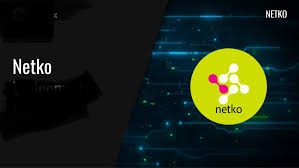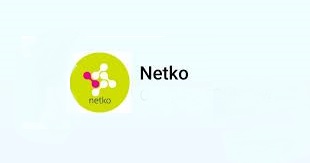Netko NETKO Guide: Features, Trading, Mining & Secure Storage
Table of Contents

Netko NETKO is a Mineable Token. Are you curious about expanding your crypto portfolio with other mineable tokens or alternative coins? At Niftyfinances, you’ll find in-depth information, guides, and the latest updates on various promising crypto projects. Whether you’re a miner or an enthusiast looking for unique opportunities, Niftyfinances is your go-to platform to discover what’s next in decentralized finance!
Netko NETKO is an open-source cryptocurrency launched on March 8, 2017, by a team of IT enthusiasts. Designed as a Proof-of-Work/Proof-of-Stake (PoW/PoS) hybrid with no premine, Netko aims to provide a decentralized digital currency solution. This guide delves into the features of Netko, methods to acquire and trade NETKO tokens, mining processes, and best practices for secure storage.

What is Netko NETKO?
Netko NETKO is a hybrid Proof-of-Work (PoW) and Proof-of-Stake (PoS) cryptocurrency that combines mining and staking to secure its blockchain network. Originally developed by a team of IT enthusiasts, Netko aims to provide a decentralized, energy-efficient, and low-cost digital currency for transactions and staking rewards.
As a hybrid cryptocurrency, Netko NETKO allows both miners and coin holders to participate in the network’s security and consensus mechanism. This system provides a balance between the computational security of PoW and the energy efficiency of PoS, making Netko a sustainable and scalable alternative to traditional PoW cryptocurrencies.
Purpose
Netko was designed to offer a fast, low-cost, and accessible digital currency. With a focus on decentralization, security, and efficiency, Netko provides several advantages over purely PoW-based or PoS-based cryptocurrencies.
Key Features
- PoW/PoS Hybrid System
- Netko initially allows mining through PoW before transitioning to PoS for long-term security and sustainability.
- This hybrid model ensures network stability while reducing reliance on energy-intensive mining.
- Fast and Low-Cost Transactions
- Designed to process transactions quickly and with minimal fees, making it ideal for everyday use.
- Decentralized and Community-Driven
- Developed by a team of IT enthusiasts rather than a centralized organization, ensuring community involvement in decision-making.
- Eco-Friendly Staking Mechanism
- Unlike traditional PoW mining, which requires significant computational power, Netko’s PoS model allows users to earn staking rewards with minimal energy consumption.
- Security and Scalability
- The hybrid consensus model provides enhanced security while maintaining network efficiency as the number of users grows.
Origin and Development
Netko was created by a group of IT professionals who saw an opportunity to improve upon existing blockchain models. The developers wanted to create a cryptocurrency that could be mined using PoW in its early stages while eventually transitioning to a more sustainable PoS model.
The development of Netko focused on:
- Decentralization – Removing control from centralized entities and giving power to the community.
- Accessibility – Ensuring that anyone with an internet connection could participate in staking without expensive hardware.
- Energy Efficiency – Moving towards a PoS model that reduces the environmental impact of blockchain technology.
Since its launch, Netko has been adopted by a niche group of users who appreciate the benefits of a hybrid cryptocurrency system.

Use Cases and Applications of NETKO Tokens
Netko NETKO tokens serve several purposes within the ecosystem, making them valuable for both individual users and businesses.
1. Staking and Passive Income Generation
- Netko’s PoS system allows users to earn staking rewards by holding and securing tokens in their wallets.
- The staking process encourages long-term investment, reducing market volatility.
2. Payment Transactions
- NETKO tokens can be used for peer-to-peer transactions with minimal fees.
- The low-cost transaction model makes it suitable for microtransactions and day-to-day payments.
3. Decentralized Applications (dApps) and Smart Contracts
- Developers can integrate Netko NETKO into blockchain-based applications.
- The network’s hybrid system makes it a flexible choice for potential DeFi (Decentralized Finance) projects.
4. Mining and Network Security
- Miners can initially earn Netko NETKO through PoW mining before transitioning to staking.
- This dual approach ensures a secure and sustainable blockchain.
Comparison with Other PoW/PoS Hybrid Cryptocurrencies
Netko’s hybrid model places it alongside other cryptocurrencies that utilize both mining and staking for network security. Here’s how it compares to similar projects:
| Feature | Netko NETKO | Dash | Horizen (ZEN) | PIVX |
|---|---|---|---|---|
| Consensus Model | PoW/PoS Hybrid | PoW | PoW/PoS Hybrid | PoS |
| Block Rewards | Mining + Staking | Mining + Masternodes | Mining + Staking | Staking |
| Transaction Speed | Fast, low fees | Fast | Scalable with zk-SNARKs | High-speed PoS |
| Privacy Features | Basic | PrivateSend | zk-SNARKs privacy tech | zk-SNARKs |
| Main Focus | Hybrid mining and staking | Payments | Security and privacy | Staking rewards |
Netko NETKO is a hybrid PoW/PoS cryptocurrency designed for both miners and stakers, offering fast transactions, low fees, and decentralized governance. While it may not be as widely recognized as some mainstream cryptocurrencies, its hybrid model provides opportunities for both active and passive participants in the blockchain ecosystem.

Acquiring Netko NETKO: A Complete Guide
Netko NETKO is a hybrid PoW/PoS cryptocurrency that can be acquired through trading on supported exchanges or by earning through mining and staking. This guide will walk you through the platforms where NETKO is available, a step-by-step process for purchasing the tokens, and key factors to consider when choosing a trading platform.
List of Platforms and Exchanges
Since Netko is a relatively niche cryptocurrency, it may not be available on major exchanges like Binance or Coinbase. However, smaller and decentralized exchanges (DEXs) may support NETKO trading. Here are some potential platforms where NETKO could be traded:
- Crex24 – A smaller exchange that has supported various altcoins, including NETKO.
- Uniswap or Other DEXs – If wrapped versions of Netko NETKO exist on Ethereum or Binance Smart Chain, decentralized exchanges could facilitate trading.
- TradeOgre – Known for listing lesser-known cryptocurrencies with PoW and PoS models.
- StakeCube – A platform that supports staking and trading of hybrid cryptocurrencies.
Since exchange listings change over time, it’s recommended to check for the most up-to-date information on the Netko NETKO project’s official website or community channels.
Step-by-Step Guide to Purchasing NETKO Tokens
Step 1: Choose a Trading Platform
- Visit the official Netko website or community pages to verify where NETKO is currently listed.
- Compare the available exchanges based on liquidity, fees, and security.
Step 2: Create an Account
- If the chosen platform requires registration, sign up with an email and set a strong password.
- Enable two-factor authentication (2FA) for enhanced security.
Step 3: Deposit Funds
- Depending on the exchange, you may need to deposit Bitcoin (BTC), Ethereum (ETH), or a stablecoin (USDT) to trade for Netko NETKO.
- Some exchanges may allow fiat purchases, but this is less common for niche cryptocurrencies.
Step 4: Locate the NETKO Trading Pair
- Search for NETKO in the exchange’s trading section.
- Look for common trading pairs like NETKO/BTC or NETKO/USDT.
Step 5: Execute the Trade
- Choose between a market order (instant purchase at the current price) or a limit order (buy at a specified price).
- Confirm the transaction and check your balance once the order is completed.
Step 6: Withdraw NETKO to a Secure Wallet
- Never store large amounts of cryptocurrency on an exchange due to security risks.
- Transfer your NETKO tokens to a compatible wallet (desktop, mobile, or hardware wallet).
- Double-check the withdrawal address before confirming.
Selecting the Appropriate Trading Platform
When choosing an exchange to acquire Netko NETKO, consider the following factors:
1. Security and Reputation
- Research the platform’s security measures and history of hacks.
- Look for exchanges that offer 2FA, cold storage, and withdrawal confirmations.
2. Liquidity and Trading Volume
- Higher liquidity means easier and faster transactions at stable prices.
- Check the order book depth to avoid price slippage.
3. Trading Fees and Withdrawal Limits
- Compare maker and taker fees to determine transaction costs.
- Some exchanges have high withdrawal fees for lesser-known cryptocurrencies.
4. User Interface and Support
- Choose an exchange with a user-friendly platform, especially if you’re new to trading.
- Ensure there is customer support in case of issues with deposits, trades, or withdrawals.
5. Availability of Fiat On-Ramps
- If you don’t already hold crypto, consider platforms that allow purchasing NETKO with fiat (bank transfers, credit cards).
Acquiring Netko NETKO requires finding a suitable exchange, securing your purchase, and transferring your tokens to a safe wallet. Since it is a niche cryptocurrency, checking the latest exchange listings and community updates is crucial. Always prioritize security by choosing reputable platforms and storing your tokens in a private wallet rather than on an exchange.
Trading Netko NETKO
Netko NETKO is a hybrid PoW/PoS cryptocurrency that can be traded on select exchanges. Whether you’re looking for short-term profits or long-term gains, understanding the available trading pairs, market dynamics, and risk management strategies is crucial.
Available Trading Pairs for NETKO
Since Netko is a niche cryptocurrency, its trading pairs may be limited compared to major digital assets. However, the most common trading pairs you might find on exchanges include:
- NETKO/BTC – Trading Netko against Bitcoin (BTC) is the most likely option due to BTC’s liquidity.
- NETKO/USDT – Some exchanges may offer a stablecoin pair, allowing for easier price stability and fiat conversion.
- NETKO/LTC – Litecoin (LTC) pairs are sometimes available on altcoin-focused exchanges.
Since exchange listings change, always check the latest trading pairs before making investment decisions.
Short-Term vs. Long-Term Trading Strategies
Short-Term Trading (Day Trading and Swing Trading)
Short-term traders capitalize on price fluctuations within a day or over a few days. Common strategies include:
1. Scalping
- Involves making multiple quick trades to profit from small price movements.
- Requires high liquidity and low spreads to be effective.
- Works best when NETKO is traded on exchanges with significant volume.
2. Swing Trading
- Traders hold NETKO for days or weeks, aiming to benefit from market swings.
- Requires technical analysis (TA) to identify entry and exit points.
- Moving averages, RSI (Relative Strength Index), and Fibonacci retracements can help in decision-making.
3. Arbitrage Trading
- Involves taking advantage of price differences across multiple exchanges.
- Useful if NETKO is listed on different platforms with varying liquidity.
- Requires fast transactions and low withdrawal fees to be profitable.
Long-Term Trading (Holding and Staking)
Long-term investors focus on accumulating NETKO for potential future growth.
1. Holding (HODL Strategy)
- Buying NETKO and holding for months or years, expecting price appreciation.
- Ideal for those who believe in Netko’s technology and adoption potential.
- Requires patience and the ability to withstand market volatility.
2. Staking for Passive Income
- Since NETKO supports Proof-of-Stake (PoS), long-term holders can earn staking rewards.
- Allows investors to compound their holdings while reducing exposure to market fluctuations.
- Ensures passive income while waiting for price appreciation.
Risk Management Practices
Since Netko is a low-market-cap cryptocurrency, its trading carries unique risks. Here’s how to mitigate them:
1. Managing Volatility Risks
- Low liquidity can lead to high price swings, increasing the risk of slippage.
- Avoid trading large amounts at once to prevent drastic price impacts.
- Use stop-loss orders to limit potential losses.
2. Avoiding Exchange-Specific Risks
- Smaller exchanges can have security vulnerabilities or withdrawal restrictions.
- Store NETKO in a private wallet rather than leaving it on an exchange.
- Use exchanges with strong security measures (2FA, cold storage, and proof of reserves).
3. Diversifying Investments
- Do not allocate all funds into NETKO—consider diversifying into other cryptocurrencies.
- Combining PoW/PoS hybrid projects with larger assets (BTC, ETH) can reduce risk exposure.
4. Monitoring Market Sentiment and News
- Join the Netko community (forums, Discord, or Telegram) to stay updated on development progress.
- Keep an eye on exchange listing changes and liquidity updates.
- Use tools like CoinMarketCap and CoinGecko to track price trends.
Trading Netko NETKO requires an understanding of its market availability, price volatility, and long-term potential. Short-term traders can benefit from swing trading and arbitrage, while long-term investors can take advantage of staking and holding strategies. Proper risk management, including liquidity considerations and exchange security, is essential when dealing with low-market-cap cryptocurrencies like Netko NETKO.
Mining Netko NETKO: A Complete Guide
Netko NETKO is a hybrid Proof-of-Work (PoW) and Proof-of-Stake (PoS) cryptocurrency that allows users to earn rewards through both mining and staking. This guide covers the mining process, the necessary hardware and software, node setup, profitability considerations, and the best mining pools for Netko NETKO.
Netko’s Proof-of-Work/Proof-of-Stake Hybrid Mechanism
Netko NETKO utilizes a hybrid consensus mechanism, meaning that both PoW miners and PoS stakers can secure the network and earn rewards.
- Proof-of-Work (PoW): Miners use computational power to validate transactions and create new blocks, earning NETKO as a reward.
- Proof-of-Stake (PoS): Holders of NETKO can stake their coins in a wallet to support the network and receive staking rewards.
The PoW phase secures the network in its early stages, while PoS ensures long-term decentralization and energy efficiency.
Required Hardware and Software for Mining NETKO
Hardware Requirements
Netko’s mining algorithm determines the type of hardware needed. If Netko uses a CPU-friendly or GPU-based PoW algorithm, consider the following:
- CPU Mining:
- AMD Ryzen or Intel Core i7/i9 processors
- Suitable for low-power mining setups
- GPU Mining:
- NVIDIA (RTX 3060, 3070, 3080, 3090, or newer)
- AMD (RX 5700 XT, RX 6800 XT, RX 6900 XT)
- Ideal for higher hashrates and profitability
Software Requirements
- Mining Software:
- XMRig (for CPU-based mining)
- T-Rex Miner, GMiner, or lolMiner (for GPU-based mining)
- Netko Wallet: Required to receive mining rewards. A desktop wallet is recommended for security.
- Mining Pool Software (if using a pool): Some pools require specific software configurations.
Setting Up a Netko Mining Node
Setting up a mining node allows you to contribute directly to the Netko NETKO network.
Step 1: Install a Netko Wallet
- Download the official Netko wallet from the project’s website or GitHub.
- Set up and secure your wallet with a strong password and backups.
- Obtain your wallet address to receive mining rewards.
Step 2: Download Mining Software
- Choose the appropriate mining software based on your hardware.
- Configure the miner with your wallet address and mining pool settings (if applicable).
Step 3: Connect to the Network
- If mining solo, ensure your node is fully synchronized with the Netko NETKO blockchain.
- If using a pool, join by setting up the mining software with the pool’s stratum URL and port.
Step 4: Start Mining
- Run the mining software and monitor performance.
- Adjust power settings to optimize efficiency and reduce overheating risks.
Storing Netko NETKO Securely
Securing your Netko NETKO holdings is essential for protecting your assets from potential threats such as hacking, phishing, and hardware failures. This guide covers the best wallets for storing Netko NETKO, security best practices, and the importance of regular updates and backups.
Best Practices for Securing Your Netko Holdings
Keeping your Netko NETKO tokens safe requires a combination of strong security measures and responsible management. Follow these best practices:
1. Enable Strong Passwords and Encryption
- Use a strong, unique password for your wallet.
- If your wallet supports encryption, enable it to add an extra layer of protection.
2. Use Two-Factor Authentication (2FA)
- If your wallet provider or exchange supports 2FA, enable it for extra security.
- Use an authenticator app (Google Authenticator, Authy) instead of SMS-based 2FA.
3. Avoid Keeping Funds on Exchanges
- Exchanges can be vulnerable to hacks and fraud.
- Withdraw Netko NETKO to a personal wallet for full control over your funds.
4. Be Cautious of Phishing Attacks
- Never share your private keys or seed phrases with anyone.
- Always verify the official website before downloading the wallet software.
- Be wary of fake wallet apps or phishing emails requesting login details.
5. Keep Your Computer and Wallet Software Secure
- Use antivirus software and a firewall to protect against malware.
- Avoid downloading files from untrusted sources.
- Consider using a dedicated device for crypto transactions.
Netko NETKO presents a unique approach in the cryptocurrency landscape, serving as a decentralized digital currency with a PoW/PoS hybrid mechanism. For those interested in engaging with Netko NETKO, it’s crucial to conduct thorough research, utilize reputable platforms for acquisition and trading, understand the mining process, and implement robust security measures for storage. Staying informed about market dynamics and technological advancements will enhance your experience within the Netko NETKO ecosystem.